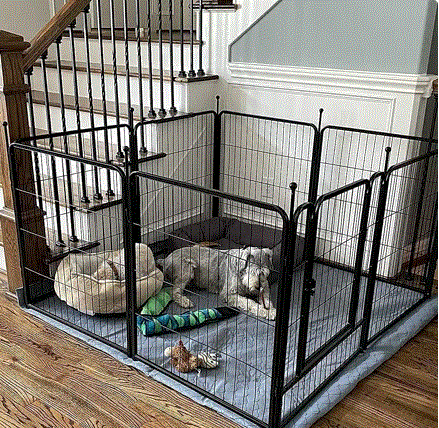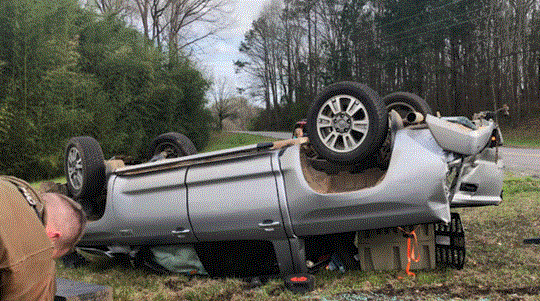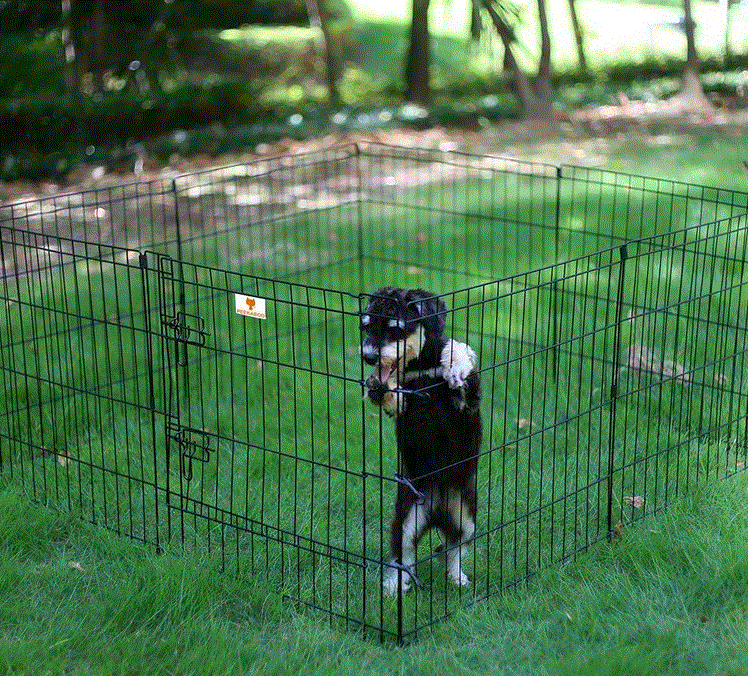I’ve regularly been posting in various dog groups about how to house break a pup. It usually winds up being a couple of pretty long posts and I’ve always thought I should probably just write a blog post about it so I can not have to type it all out again!
First, let’s address the elephant in the room.
I know there are countries in which “crates” are illegal. Understand that by “crate” I mean a small enclosure for the dog. This can be a crate or a play pen. It just needs to be a place where the dog can be safely and securly contained. For the sake of this article, I will use the word “crate” but it can be replaced with pen. Also understand that whatever you use, it should be used VERY judiciously and for VERY limited times.
If you do choose to use a pen, it should be very sturdy. The puppy should not be able to simply jump up and knock it over or push under/through it. I suggest a metal pen for this reason.

It should NEVER, EVER be used for punishment and NEVER used in place of a secure yard or kennel or house for when you are gone for extended periods of time.
Crate training DOES mean the dog can be contained for a short period of time in an enclosed area without undue stress or anxiety.
Crate training also does not mean you have to do it for the rest of its life. Crate training is a foundational training that you can use or not as the pup grows and matures.
Crate training is also a training process just like training a dog to catch a frisbee or to walk at heel. You wouldn’t just throw a frisbee and expect the dog to wait to be told to retrieve it, retrieve it, return it to you with a smart sit and delivery to hand. Therefore you also don’t just throw a puppy into a crate or pen and expect they will know to wait comfortably and quietly to be let out.
Crate training has huge benefits if it’s done properly.
There are so many reasons why crate training is beneficial for the dog. By that I mean training a dog to be comfortable in a crate so they are not experiencing additional stress or anxiety.
Crate training absolutely keeps your dog safe and calm when they travel in a car. Dogs loose in a car are missiles in an accident.

Crate training means a dog can go to a boarding kennel or veterinary office for an extended time without becoming frantic and even possibly hurting themselves when they have to be contained.
There are lots more reasons why crate training is beneficial to the dog and most have NOTHING to do with owner convenience.
So, what does crate training have to do with house training?
House training is really a matter of the owner getting in sync with their dog and learning when it needs to go out. This is then combined with training them that doing their business outside is good. Crates are a good first step in learning those habits.
The first trick to getting in sync with your dog’s pottying habits is to control when they go. To do this we can use the dog’s instincts to not potty in their den/where they sleep – which means using a crate or pen.
SO, the first thing we do is teach them that the crate is a GOOD thing. We do this by feeding them in their crate.
This means the pup will be fed at the same time, in the same place every day. This also means NO free feeding. Free feeding – where you just put a bowl down and keep it full of food – is a way to build bad eating habits. It also doesn’t allow you to correctly monitor how much they are eating which means you can’t tell if they are “off their feed” and it doesn’t allow for adjusting food for weight control.
Teach your puppy that meals are served in their crate/pen
Put the food in the crate or pen. Put the pup in the crate. Shut the crate door. Wait 20 min or until the pup finishes the food. Let the pup out.
Seems easy, right? Well the first time you do this the pup will probably scream and throw a fit, stomping in their food bowl and throwing the food everywhere – much like a toddler throwing a tantrum because they are being restrained from somewhere they can’t go.
That’s OK. They don’t understand yet what the crate is and what it means. Leave them in the crate for 20 minutes then let them out – whether they have eaten or not. Clean up the crate.
Next feeding time, repeat. They may do the same thing again, that’s OK. But they will not do this forever, nor will they starve themselves to death. They may miss a meal or two or four, but they WILL figure out that this is where the food is and they will eat. They will also learn that the crate isn’t going to be their eternal prison, but simply a safe place they are in for a short time.
While this doesn’t have to be for the rest of their lives, for now the trick is to be consistent. In my house ALL meals are in crates. It helps prevents resource guarding and gives them a safe place to eat where they can focus on their food. If you choose not to use a crate or playpen to feed them in forever, then make sure they have a place they can eat where they will NOT be disturbed or interrupted by anyone (you, your kids, your neighbors, etc) or anything (your cat, their sibling, a package falling through a mail slot etc.)
Now that we have the pup eating in the crate, let’s move on to house training using a crate or pen.
Night time pottying
For this the dog crate or pen needs to be moved to your bedroom at night, or another crate or pen procured for the bedroom.
Once it is time for bed, put the pup in the crate or pen and put it directly next to your bed, where you can touch it from bed. Get into bed and shut off the lights. If the pup starts to fuss or get anxious, put your fingers up to the crate door or the pen and calm him/her down. (If I had a dollar for every night I’ve slept with my fingers laced through a crate door… LOL!)
It is likely for a young pup that they will wake you in the night to go outside. When they do, follow this routine.
DO NOT TURN ON THE LIGHTS. That’s right, keep it dark and quiet.
Quietly pick up the pup (or put a leash on him/her if they are too big to carry) and take them outside to a predesignated place to potty. Put them down in that spot. You can simply keep them on leash in that area but I strongly recommend using a pen of some sort.

DO NOT TALK TO THEM. Do nothing that “winds them up. ” Just stand there, quietly, and wait for them to do their business. When they do, calmly tell them “good dog!” then pick them up and carry them or walk them on leash back to their crate or pen. They may fuss, they may jump up on you, they may tug on your pajamas. DO NOT INTERACT. They are trying to entice you to play with them, but this is not play time. This is sleep time.
But them back into their crate or pen by your bed and go back to sleep. If they fuss, put your hand where they can smell it and calm them.
This is all to teach them that night time is sleep time or maybe go potty time. It is not “race around and sniff everything and chase rabbits” time. Think about this like a child. If a toddler has to use the potty at night, turning on the lights, turning on the TV or letting them get into all the toys will simply excite them so that they will not want to go back to sleep. By keeping it dark and focusing their attention on going to the potty, you can encourage good sleeping habits!
Now we have the pup eating in their crate or pen and sleeping in their crate or pen. The dog now understands this is their safe happy place. But what do we do about during the day when the pup is loose with us in the house?
Potty Timing
There are a couple of timing things to know
- Dogs will likely have to eliminate 30 min after they eat.
- Dogs will likely have to urinate immediately upon waking up from a nap.
- Dogs like to be consistent on where they potty/they will tend to use the same spot again and again
So we can use this to start to get aware of their body language and knowing when to take them out. If you use the “keep the pup in the crate for 20 min while they eat” method, then you know they will want to go out to potty after they get out. So, take them out, put them in the predesignated potty area until they do their business. Then let them out to run and play.
Same for taking a nap. If you notice your pup is sleeping, keep an eye on them. When they wake up, right outside to the potty spot they go. Then bring them back in for a moment, maybe with a little treat reward, THEN they can go back outside to run and play.
When you pup is in the house playing, you must watch them like a hawk. If they start to exhibit behaviors indicating they are looking for a place to potty (head down, casting their head back and forth across the floor and sniffing as they walk determinedly, or going back and sniffing around a place where they have pottied before, etc) then it is up to you to get them outside to potty before they have an accident in the house.
Again, take them out and to their potty spot. (you may be noticing a theme here! LOL!) Reward them for using it, then take them back inside. If they want to go out after that, great!
If they DO start to potty in the house and you catch them “mid squat” then scoop them up immediately (yes there may be dribbling and dropping) with a “NO NO!” and take them outside and put them in the designated potty spot. Tell them “GOOD GOOD DOG! YAY!!”
This is about teaching them that it is GOOD to potty outside.
If you happen to come across an accident in the hall and you didn’t actually catch the dog doing it, then that is your error, not the pup’s. Clean it up and know that you will have to watch them when they head to that area in the future.
You may also want to institute a “potty bell.” This consists of hanging a string of bells over the door knob that goes outdoors and teaching them to “ring the bell” when they need to go out. There are a LOT of articles on bell training on the net.
The issue I have with bell training is that they rarely talk about the difference between teaching a dog to ring the bell when they want to go out and teaching them to ring the bell when they have to go out to potty. Thus, I have ended up with dogs that ring the bell any time they want to go out to chase squirrels.. which is most of the time.
I dealt with it this way. When my dogs ring the bell, I take him or her out to the potty place. Leave them there til they do their business (or til I figure they actually DIDN’T have to go, but rather wanted to chase squirrels) and then we go back inside.. just a minute. THEN I let the out to chase squirrels. They must understand that the bell is for pottying ONLY.
By now you have probably figured out that house training is primarily:
- Knowing when the pup will need to potty – 30 min after eating, upon awakening from a nap, first thing in the morning.
- Taking them to a spot that focuses their attention on pottying and where they know they are supposed to go potty
- Lessening distractions and keeping them focused on going potty.
- Learning their body language so you can tell when they have to go potty
Good luck. It does get easier with time and they will learn. It’s up to you how quickly they learn as it will all depend on how consistent you are!